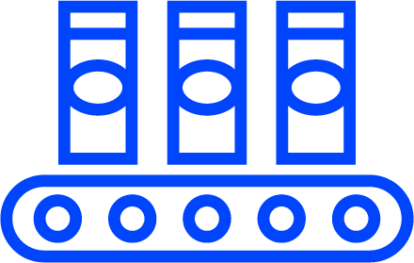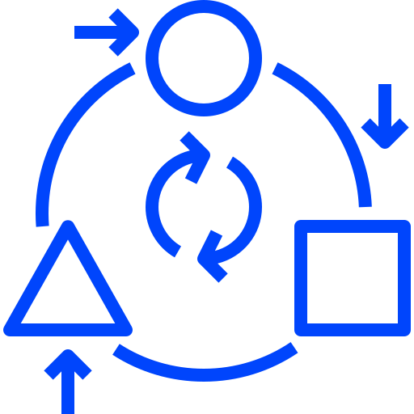
Without the proper end-of-arm tooling (EOAT), robotics adds little value to a production process. In fact, choosing the wrong EOAT can increase downtime and drive down productivity. Here are the essential EOAT solution questions to ask to ensure you choose an EOAT that maximizes your production and investment.
1. Are There Any Sanitary Needs to Consider?
Sanitation is extremely important depending on the application. Applications dealing with food should be particularly mindful of sanitation requirements and how the tooling does (or does not) meet the need.
Meat and poultry operations have strict regulatory guidelines to follow regarding cleanliness. Bakery operations, on the other hand, need to consider ingredients like sugar, flour, and syrup. The EOAT should match the product you’re handling and the issues associated with that product—not only for the product itself but also for the cleaning processes for the machines and tooling. The ideal EOAT will also ensure sanitary operations for the long term. A suction EOAT, for example, can vacuum food byproduct into the system, causing risks for system-wide contamination and maintenance nightmares. Suction cups will also require a full-system cleaning eventually with the application determining how often. It might not be something you think about upfront, but it becomes a problem afterward.
2. Can The EOAT Pick and Place My Product?
 While this seems like an easy one, it can sometimes be tricky. Most of the focus with EOAT is about picking, but that’s only half of it. The other imperative question is:
While this seems like an easy one, it can sometimes be tricky. Most of the focus with EOAT is about picking, but that’s only half of it. The other imperative question is:
Can the product be placed? When it comes to picking, consider the product and its packaging. If it has a flat surface, suction may work well. If the product doesn’t have a flat surface, that likely isn’t the best solution. It’s also important to consider the physical properties, including mass, size, and structure, of the product being transported. If the product is delicate, like a bakery item, or bruises easily, like some types of produce, an EOAT that can crush the product, bruise it or leave indentation marks from the tool while picking should be avoided. Packaging
is also a factor to consider when it comes to placement. If the product is being placed in a large, open box, it’s an easier solution but that is a rarity.
Often customers want the product precisely placed in the package each and every time. Others want the product placed according to a specific orientation in the package every single time. In choosing an EOAT, placing product in a specific compartment, in a detailed pattern, in a small area often gets missed. Knowing your metrics (Do I need precision within 1 mm or within 1 inch? Is there a specific placement order from left to right?) will help you choose the right EOAT. For any application, EOAT should excel at both picking and placing, and consistently hold product in between. The right solution will pick easily, transport products to packaging, and repeatedly and accurately place according to specific metrics and requirements with each and every pick.
3. Is This a Retrofit Line?
 The most important consideration with a retrofit line is to ensure the robotic system in place will work with the new EOAT solution. If switching to a more substantial tool, can the robot handle the additional mass of the tooling? This is especially true when switching from a vacuum system. Will the controls, wiring and mounting pattern be compatible as well? The tooling change may also affect the overall pick and place motion as well.
The most important consideration with a retrofit line is to ensure the robotic system in place will work with the new EOAT solution. If switching to a more substantial tool, can the robot handle the additional mass of the tooling? This is especially true when switching from a vacuum system. Will the controls, wiring and mounting pattern be compatible as well? The tooling change may also affect the overall pick and place motion as well.
4. How Adaptable is the Tool?
The ideal EOAT solution should adapt to any changes in product type or size, processing, and packaging equipment and any operational inputs, now and in the future. Are you running
 different SKUs, running the same product that varies in shape and size, or moving multiple products down the same line? If so, you want to look at the tooling and find something that is adaptable or adjustable so you don’t need to change the tools on the robot every time a new SKU, size, shape, or weight comes down the line. Another option to consider a tool that is easily reconfigured to help reduce downtime and costs required for needing multiple tools.
different SKUs, running the same product that varies in shape and size, or moving multiple products down the same line? If so, you want to look at the tooling and find something that is adaptable or adjustable so you don’t need to change the tools on the robot every time a new SKU, size, shape, or weight comes down the line. Another option to consider a tool that is easily reconfigured to help reduce downtime and costs required for needing multiple tools.
5. How Does this EOAT Factor into Overall System ROI?
 While the EOAT cost is merely a sliver of the overall system cost, it’s perhaps the most important functional piece of the project. Therefore, ensuring you have the right tool for the job is imperative. Choosing the wrong EOAT is exponentially more expensive when it comes to both initial investment and long-term operational impacts. Be sure to consider the overall cost, time, and value of the EOAT’s ROI, and not simply the cost of the initial investment.
While the EOAT cost is merely a sliver of the overall system cost, it’s perhaps the most important functional piece of the project. Therefore, ensuring you have the right tool for the job is imperative. Choosing the wrong EOAT is exponentially more expensive when it comes to both initial investment and long-term operational impacts. Be sure to consider the overall cost, time, and value of the EOAT’s ROI, and not simply the cost of the initial investment.
Want to know the rest?
To find out the other 5 questions, download your digital copy below!
